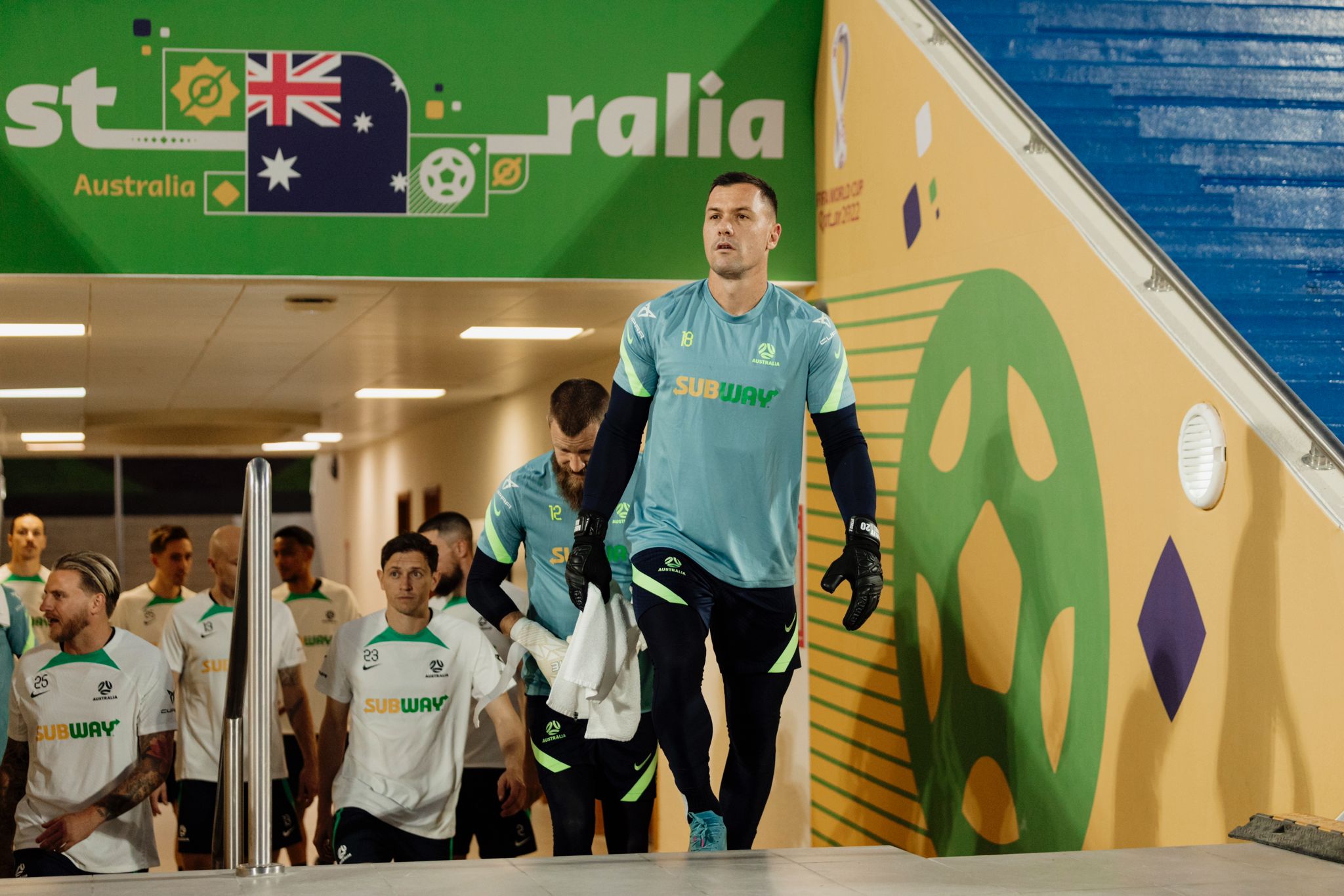A five-minute guide to how the Socceroos will (probably) play this World Cup
Fri, Nov 18.22


Despite being the World Cup mainstays that they are, it’s pretty common for Australia to enter a World Cup as something of an unknown quantity. The nation’s crop of Premier League-level household names has given way to a younger generation of players plying their trade to varying degrees of success around the world, from Copenhagen to Cadiz. And while Socceroos diehards in their Cumdog-printed shirts will likely know this team inside out, the question of what to expect from Graham Arnold and his boys, particularly given the quality of the opposition they’re facing, is a murky one for the casual observer. So what can we expect when the Socceroos take to the pitch in Qatar? Here’s the basics, plus a few important players that their chances of progressing out of an extremely tough Group D hinge on.
So, how do the Socceroos play?
The style of football favoured by Socceroos coach Graham Arnold is probably better exemplified in his golden run managing Sydney FC than what we’ve seen from the Australian national teams he’s run in his four-year tenure so far. Expansive, possession-based and pass-heavy, Arnold’s teams work best when they have the ball lots and are afforded space to operate.
The problem for Australia, and other teams of their quality, is that this system only gets you as far as is allowed by the level of opposition they play. Australia has a proven ability to put plenty of goals past teams in the early stages of qualifying against lower-ranked opponents, but when pressed back by tougher opposition, as viewers may have seen in the play-off against Peru, they tend to fall back in upon themselves and adopt a more insular approach —passing mostly between the defenders and often struggling to find a way to get the ball up the pitch.
Naturally, this doesn’t bode all that well with Australia set to face a France squad that might be the strongest in the entire tournament and a Denmark team that’s going into Qatar as arguably one of its most underrated sides. Tunisia, with its own counter-attacking style, will likely give the Green and Gold more space to operate, but it’s probably fair to assume most of the possession Australia sees in this World Cup will come with the boys on the back foot.
Still, it’s not all doom and gloom.
The potential game-changers
Aaron Mooy
Playing in a central midfield pairing likely alongside Jackson Irvine, Australia’s ability to progress the ball up the pitch, particularly with pacey winger Martin Boyle now ruled out, could well hinge on the veteran Celtic player’s proven passing ability. The problem? This isn’t the Aaron Mooy we came to know and love at Huddersfield. Mooy has struggled to impress at Celtic since his move to Ange Postecoglou’s side—the 32-year-old now looking a fair bit slower than he did in his Premier League heyday.
Mat Ryan
It could be seen as worrying for any team if their best player is their goalkeeper, but the fact of the matter is that Mat Ryan very much is that for Australia. Ryan has played fairly well throughout a much-publicised battle over the starting spot at FC Copenhagen, but having been recently dropped in favour of young Pole Kamil Gabrara, Ryan will need to shake off the rust and find his form extremely quickly if Australia are to have any hope of keeping Mbappe and co. at bay.
Harry Soutar
This feels like a World Cup where Australia is primed to score niggly goals from set pieces, and this could be where towering Stoke centre-back Harry Soutar shines. Big and bustling, Soutar is one of Australia’s most solid defensive options but also one of its prolific goal-scorers, having scored 6 goals in 10 matches—mostly from corner kicks.
Awer Mabil
Mabil’s talent is undeniable, as his summer move to La Liga side Cadiz very much proved, and as a proverbial ‘scorer of great goals’, it’s likely any moments of attacking magic will come through the Kenyan-born winger. Despite bagging his first national goal on Australian soil back in September, Mabil has struggled for game time since his move to Spain, with rumours circulating that he tried to secure a loan move from the club he had just signed for as the transfer window closed.
Garang Kuol
There are shades of 2018 Daniel Arzani surrounding Garang Kuol and having recently signed for Newcastle United off the back of one of the most stunning rises in A-League history, the Sudanese-born attacker is entering Qatar having been earmarked as player that Australia could build around for the next decade. Dynamic, dangerous and already as lethal a finisher as anyone in the A-League, Kuol is still nevertheless an unproven talent beyond domestic level. Thus, Kuol’s ability to make an impact will hinge on how much gametime Arnold trusts him with.
Share this:


